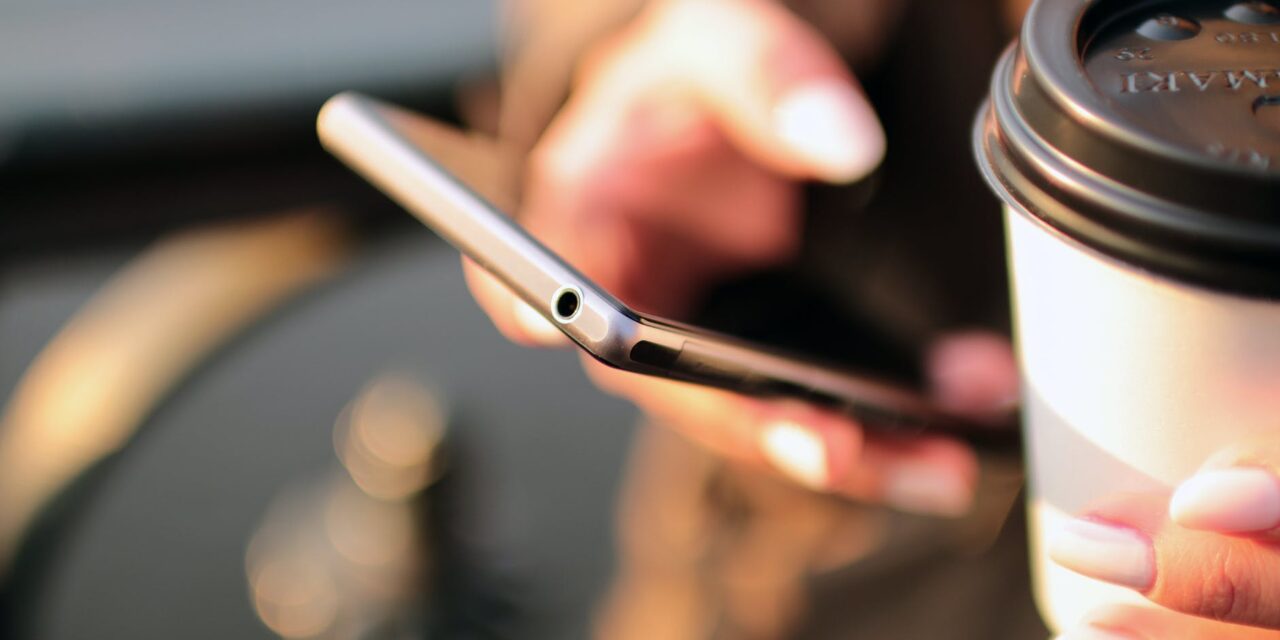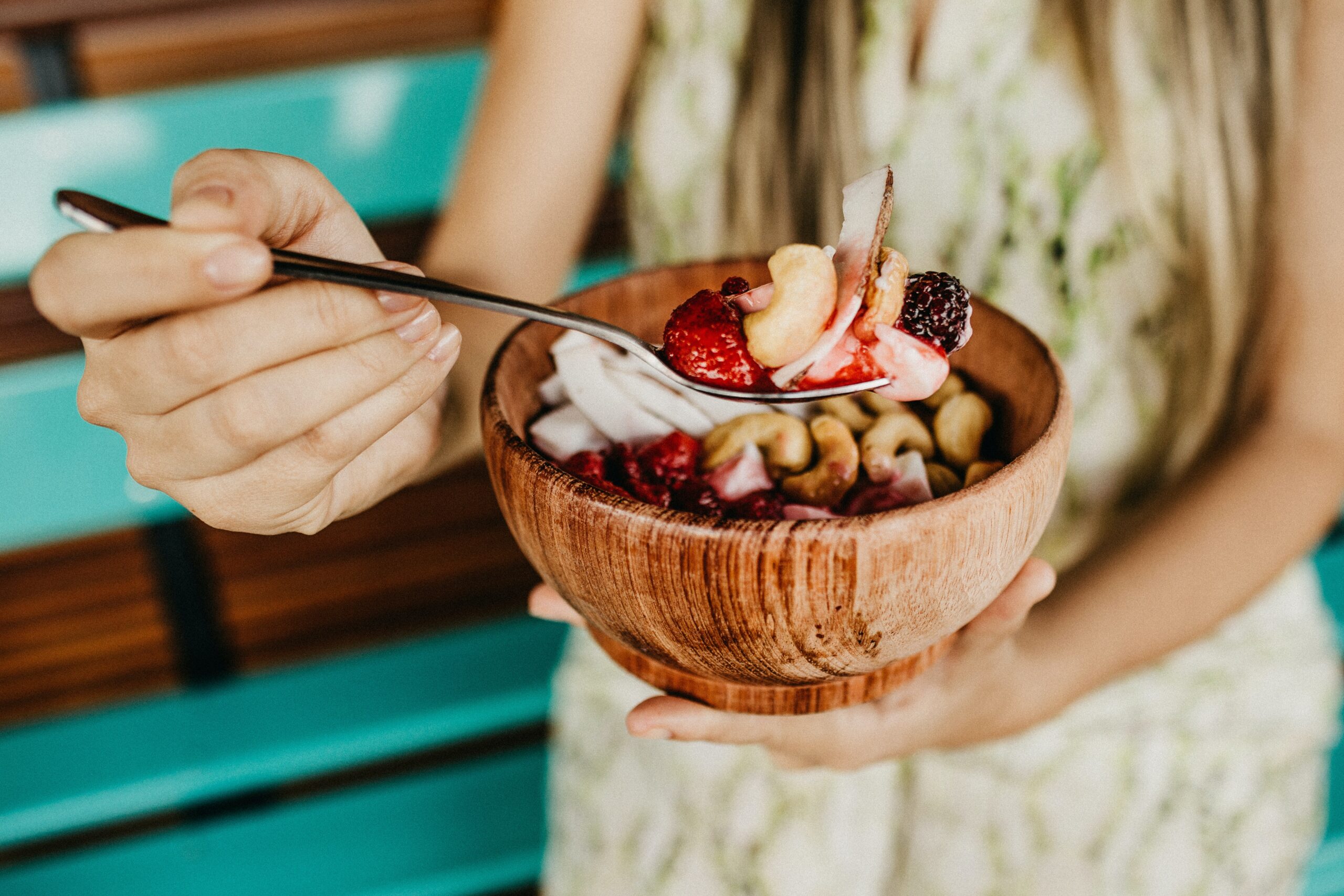Imagine trying to get out of debt without a clear budget. With no idea what to spend on OR how much to actually spend.
Would you ever expect to quickly get out of that debt?
Of course not.
You’d accidentally overspend on a near-daily basis. Money—and whether you’re spending it wisely—would be on your mind 24/7. You might even cut back on your favorite things (like a morning latte) without actually needing to.
See where I’m going with this?
Not taking the time to plan your meals sets you up to experience the same issues:
- Accidental overeating
- Unnecessary stress and worry
- Unnecessary restriction
This is especially true when you have fat loss goals—which is like having a low income when you’re in debt. There’s less room for “bad purchases.”
Here are five indisputable benefits of planning your meals in advance:
1) Success is much more likely
Let’s go back to the finance example and pretend you DID establish a plan for getting out of debt. You list all your income sources and expenses for the month. You see where you need to cut back and where you have some flexibility.
Would you not be on a much faster path to success than if you winged it every day?
2) You won’t think about food as much
My most successful clients set aside ~5 minutes per night to plan the next day’s nutrition. While not a sexy habit, it allows them to devote their bandwidth to non-food decisions the next day.
3) You feel more free around food
Some people argue the opposite: that deciding what you’re eating in advance confines you in some way. But this isn’t actually true.
When you plan your meals in advance, you get to see how much room you have for splurges. This is no difference than budgeting in advance, and seeing how much “fun money” you have leftover. In either case, you won’t be left wondering if you’re overdoing it.
4) You see what’s actually required for success
The vast majority of my new clients think they have to eat like a bird to lose fat. Taking the time to plan a higher calorie, then seeing progress is eye-opening. You have “hard data” that shows you how non-restrictive you can be while still succeeding.
Nevermind once you reach your fat loss goal, and your calories can be even higher.
5) Long-term success becomes more effortless
You can blindly cut back on spending and eventually get out of debt. But you’ll never really know how much of it was necessary, and how to avoid getting back into debt. It’ll forever be a guessing game and a source of stress for you.
Planning for success—on the financial OR fat loss front—is an educational tool that makes it easier to stay “out of debt” for a lifetime.
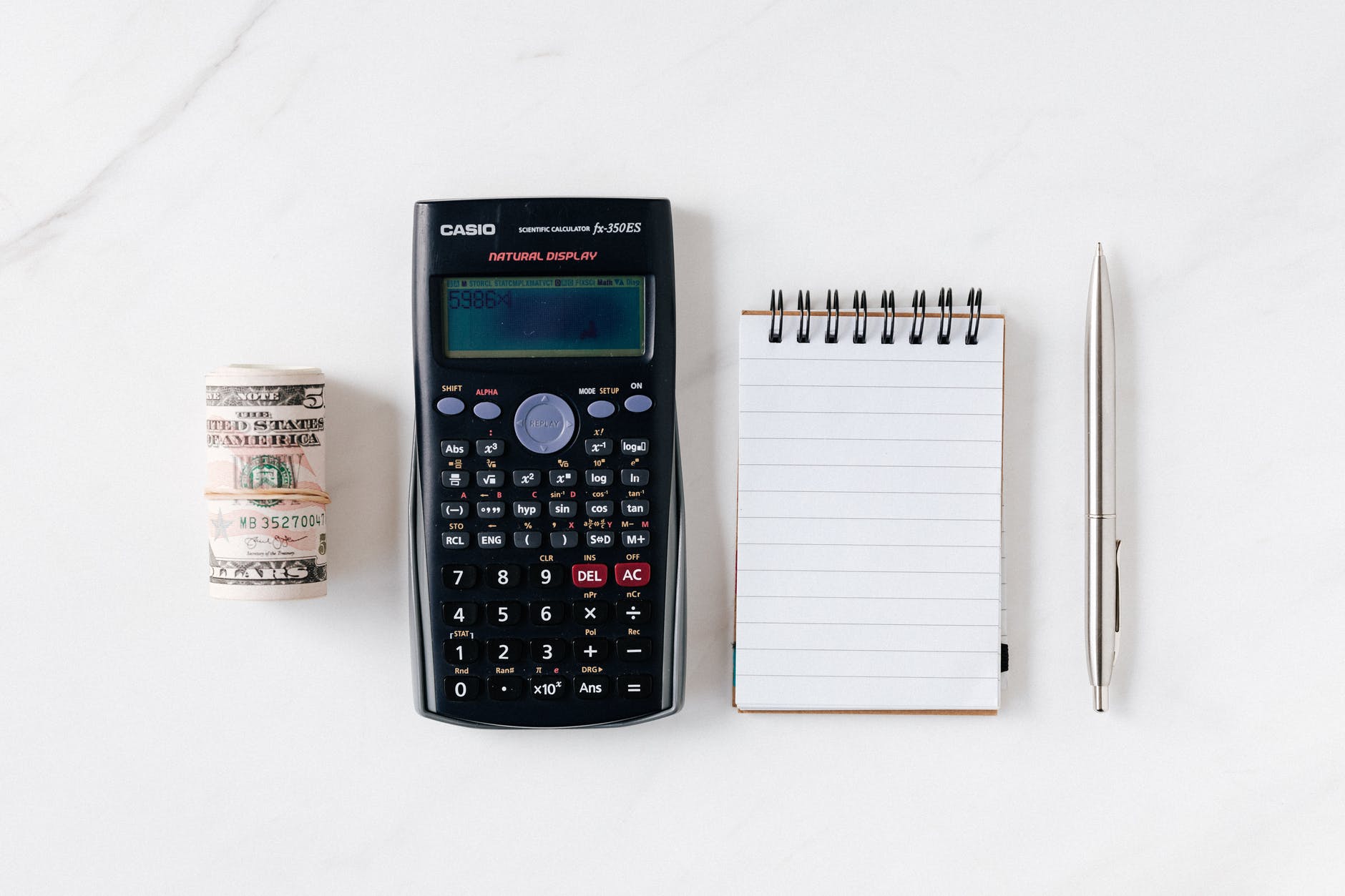
Why leave long-term success to chance if you don’t have to?
Before we get to the good part—a four-step system for meal planning—it’s worth mentioning three issues you might run into:
Issue #1: A lack of time
There’s no way around it: you won’t be good at planning your meals when you’re new to it. What takes a veteran client of mine 2-4 minutes to put together might take you 10-15+ minutes. Understandably, this might frustrate or discourage you.
But I’d be willing to bet that tacking months (or years) onto your fat loss journey by continuing to wing your meals is a far worse alternative. So stick with it and get past the initial learning curve.
My longtime client Caitlin is a great example of someone who took the time to take the guesswork out of success:

Issue #2: A sense of restriction
I’ve worked with a lot of clients who don’t want to get “pigeonholed” into a plan that may not appeal to them the next day. They worry their cravings will change, or a social situation will come up that presents a curveball.
This is a completely valid concern.
But I encourage clients to think of meal planning as nothing more than “rough drafting” the next day. You’re not married to what you plan on, and you certainly don’t have to avoid social situations in order to stick to your plan.
You simply have to adapt and make sure your “finished draft” is still mostly in line with your goals. Here’s an easy way to do that if you’re going to out to eat:
Issue #3: A lack of options
Some people sit down to set up a budget and have no idea what they should be spending on. What’s truly necessary for me? Where can I get the best bang for my buck?
Planning your meals is no different. Most people have no idea what foods they should be prioritizing, or which meals offer the biggest nutritional bang for your buck.
That’s one of the reasons I put together the One-Stop Nutrition Guide: an extensive list of foods I recommend for people with fat loss goals.
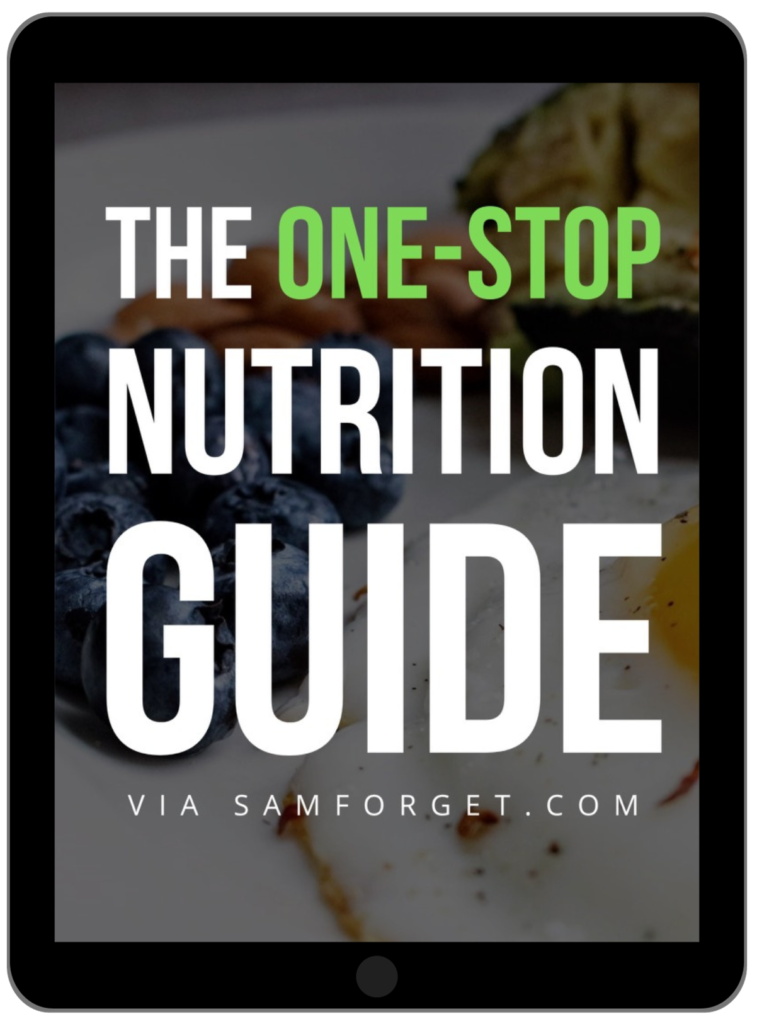
Just tell me where to send your copy:
Now that we’ve gotten the logistical considerations out of the way… are you ready to discuss the best ways to guarantee fat loss? I certainly am.
Let’s kick things off with the first step of the meal planning process:
Step #1: Establish your targets
You won’t lose weight if you’re not in a calorie deficit: burning more calories than you take in. This is how ALL diets produce weight loss (no matter how they’re marketed). So you need to know exactly how many calories to eat if you want to be successful.
This will vary wildly from person to person and depends on factors like your:
- Age and gender
- Height and weight
- Genetics
- Activity levels
- Sleep hygiene
- Stress levels
- Dieting history
Which is why working with an experienced coach (*cough*) is a far better option than using online calculators or generic estimates. They’ll take all these factors into consideration when calculating your daily needs.
NOTE: You can ignore this step if you're working with me directly and I've sent you this article as a resource. I'll personally assign your targets as we get under way.
But for the sake of this article: 10-12 times bodyweight is a good starting range for most people. This would be 2,000-2,400 calories per day for a two hundred pound person.
(I always give my clients ranges instead of a specific target. This allows for more food flexibility and mindfulness to be developed.)
There are 2-3 other targets we’ll want to get in place before we begin planning:
- Your protein minimum. Getting enough protein helps you avoid muscle loss (so the weight you lose is fat) and keeps hunger at bay. Anywhere from .8-1 gram(s) per pound of bodyweight is a good place to start for most people. Although I often "cap" this at 160 grams for men and 120 grams for women. Which keeps the process realistic and sustainable
- Your fiber minimum. Having a fiber goal is a good insurance policy against “overly flexible” dieting: where your entire day revolves around splurging. This is because the best fiber sources are generally fruits and vegetables. It also supports digestive health. ~14 grams of fiber for every 1,000 calories is a good goal for most people
- OPTIONAL: Your fat minimum. Your fat intake won’t impact your fat loss progress in any meaningful way. But getting 20+% of your daily calories from fat is a no-brainer from a health perspective. It supports both hormonal health and nutrient absorption
Your carb intake can fluctuate without impacting fat loss progress, which is why I rarely assign a specific target to my clients.
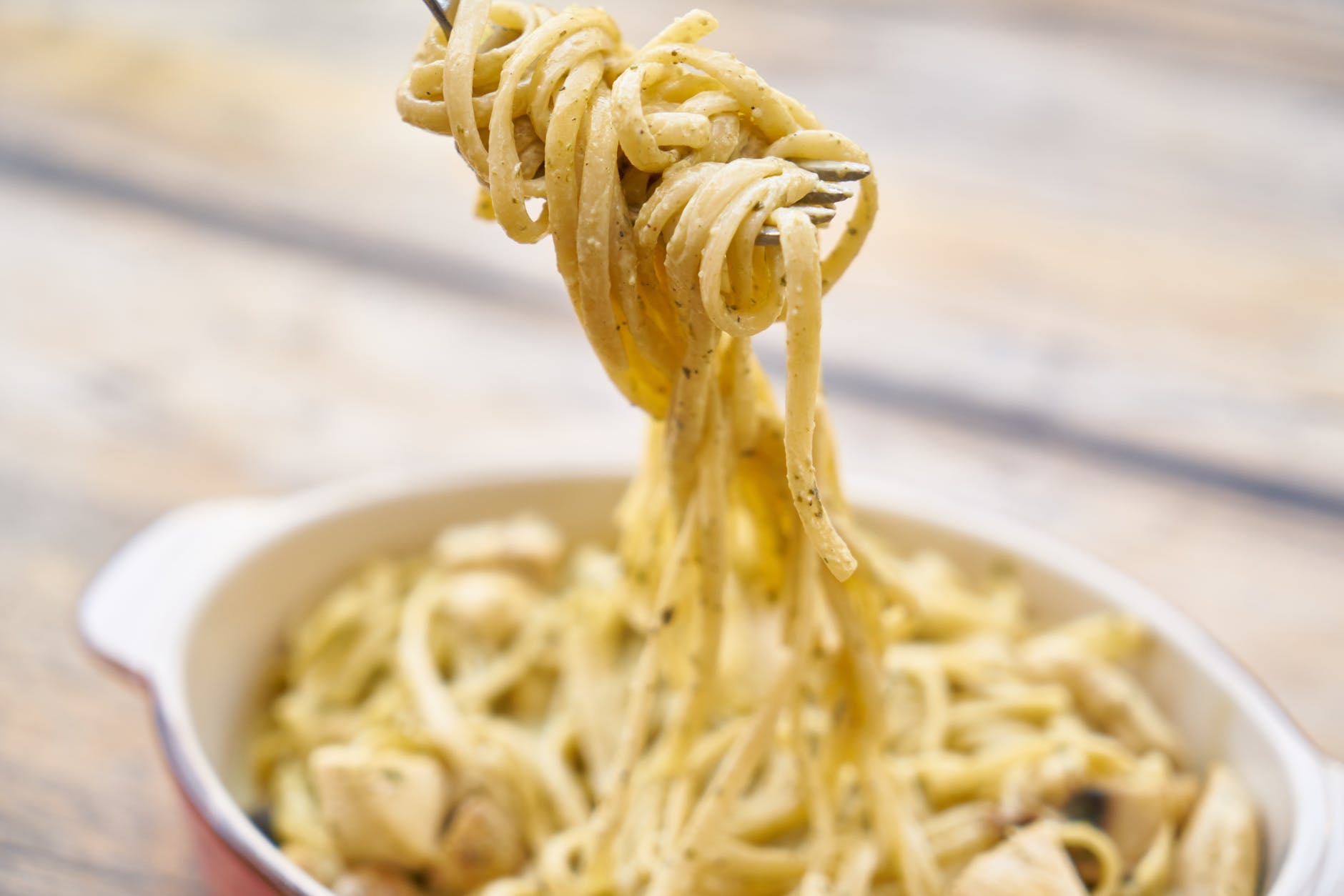
Eliminating carbs in an attempt lose weight is wildly unnecessary and typically counterproductive
Let’s recap how I got my targets as a 200 pound person with fat loss goals:
- I multiplied by bodyweight by 10-12 to get a calorie range: 2,000-2,400 per day
- I multiplied by bodyweight by .8 to get a protein minimum: 160+ grams
- I divided my calorie range by 1,000 and multiplied it by 14 to get my fiber minimum: 28+ grams
Now I have half-decent starting targets (again: a good coach will give you more personalized numbers):
- 2,000-2,400 calories
- 160+ grams of protein
- 28+ grams of fiber
It's worth repeating: I’m NOT stressing carbs because they don’t impact fat loss in any meaningful way.
Step #2: Choose your proteins first
You won’t hit your protein target by accident. Nobody keeps grilled chicken breasts on their counter or gallons of egg whites in the pantry. The vast majority of protein sources require some level of preparation. With this in mind:
- Decide how many meals you're having the next day
- Divide your protein target by how many meals you’re having
So my 160+ gram per day goal requires me to have ~40 grams at four meals. Here are some ways to get within striking distance of that number:
- Three whole eggs and four egg whites (32 grams of protein)
- ~48 grams of protein powder (40 grams of protein)
- 6-8 ounces of chicken breast (39-52 grams of protein)
- 6-8 ounces of ground beef or turkey (35-46 grams of protein)
- 6-8 ounces of steak (45-60 grams of protein)
- Two tuna packs (32 grams of protein)
- 4-6 ounces of shrimp (28-42 grams of protein)
- 6-8 ounces of salmon (35-47 grams of protein)
If you’re a vegan or vegetarian, I still have you covered. Here's a full-length guide on the best ways to piece together a reasonably high protein day without this much meat.
Here’s a sample starting draft with several of these options (that I consider "meal bases") worked in:
Breakfast: Two whole eggs and four egg whites (26 grams of protein)
Lunch: 7 ounces of chicken breast (46 grams of protein)
Pre-workout meal: 40 grams of protein powder (33 grams of protein)
Post-workout dinner: 7 ounces of ground beef (40 grams of protein)
I realize this is a bland draft, but my protein minimum is within striking distance with 1,200+ calories to spare.
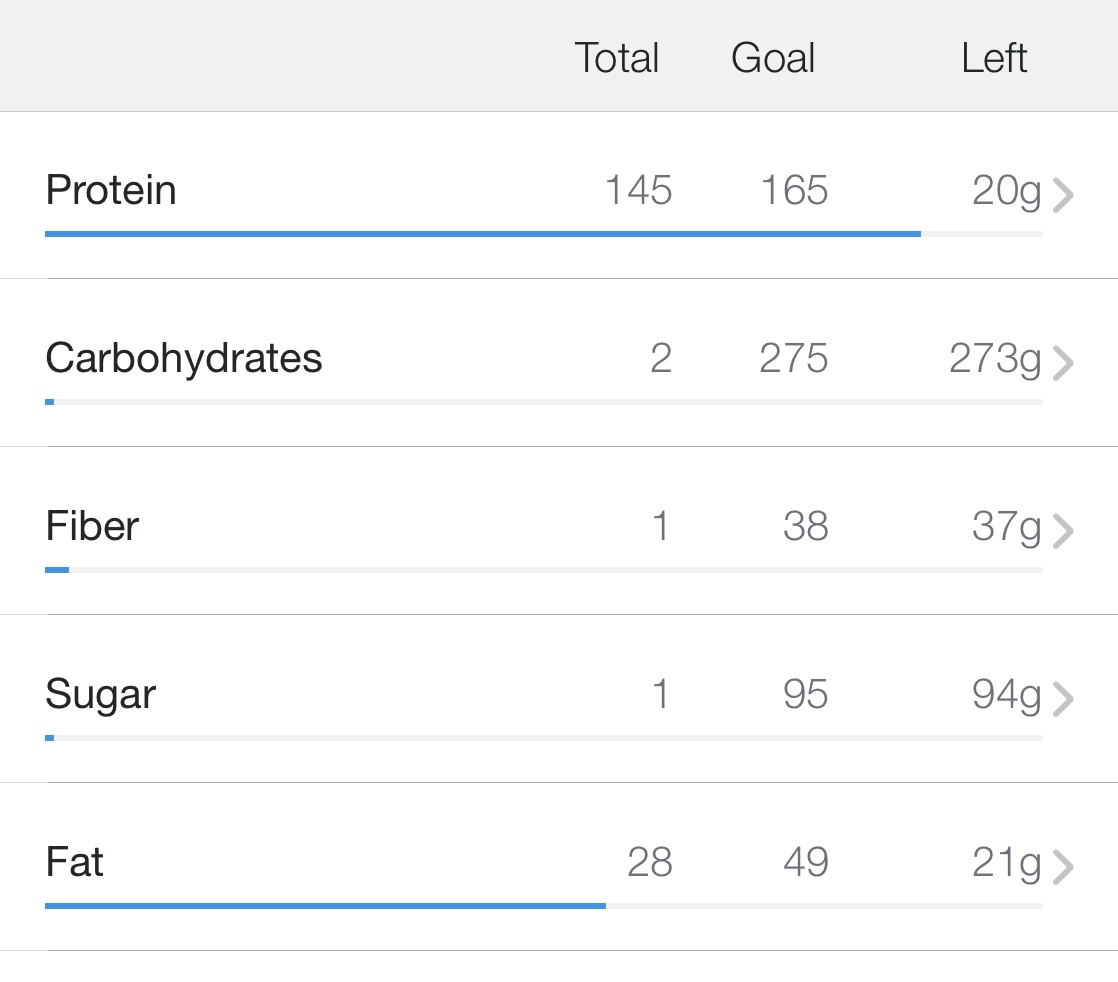
You can request a copy of the Protein Power-Up if getting more protein is something you really struggle with and you want to take the guesswork out of staying full AND looking your leanest:
Step #3: Make sure your fiber minimum is met
This technically won’t impact short-term progress, but dieters who don't prioritize food quality have a much harder time maintaining their results.
And what's the point of getting results if you don't get to keep them?
Fiber keeps you full, promotes digestive health, and is generally found in nutrient-dense, filling foods. Here are some the best sources of it:
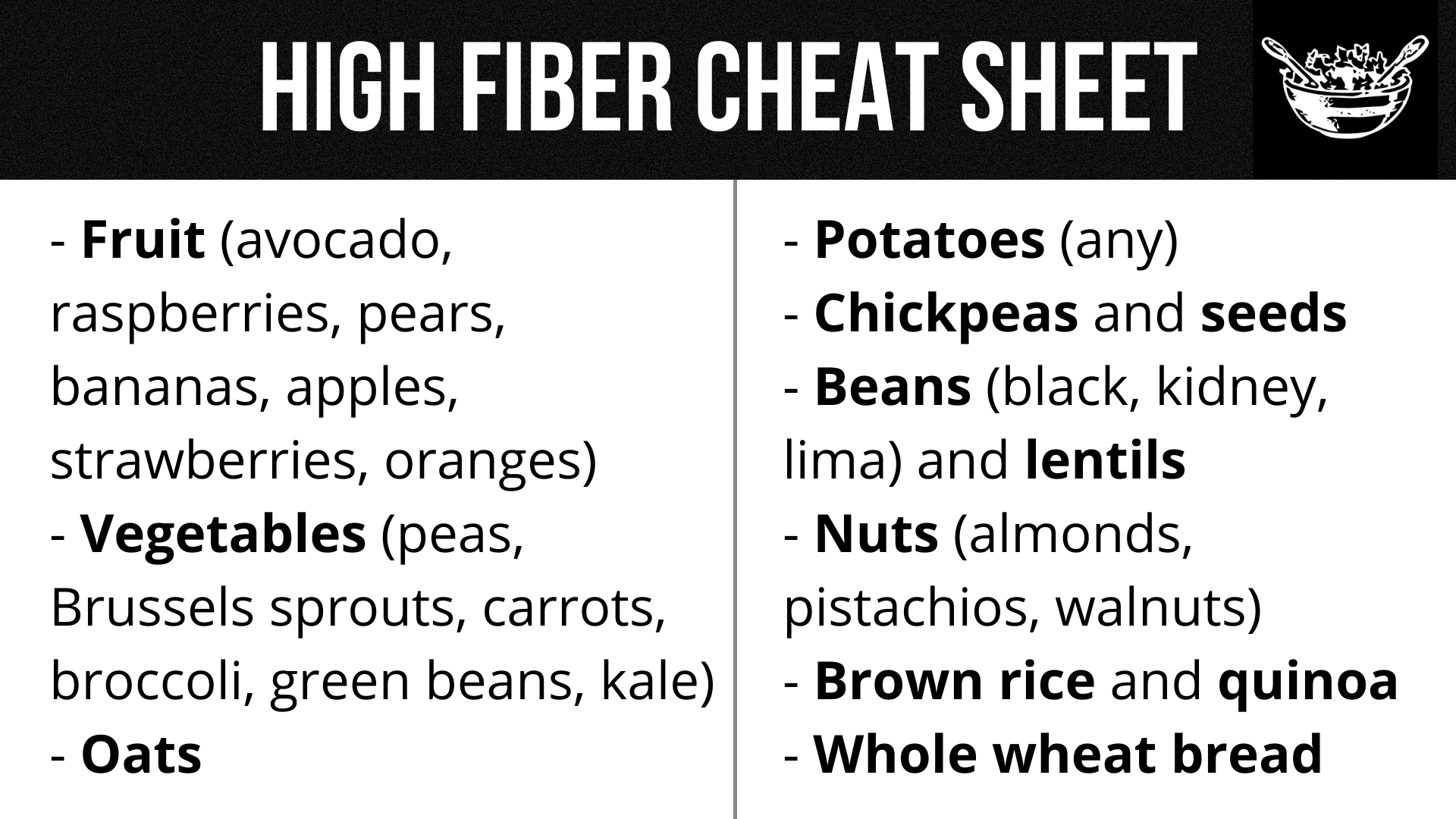
Here’s how I’ll begin working them into my plan:
Breakfast: Two whole eggs and four egg whites with protein oatmeal and a banana
Lunch: Seven ounces of chicken breast in an arugula-based salad with almonds and an apple in it
Pre-workout meal: Forty grams of protein powder in a fruit and kale smoothie
Post-workout dinner: Seven ounces of ground beef in tacos with guacamole and pinto beans
Here's a breakdown of each meal:

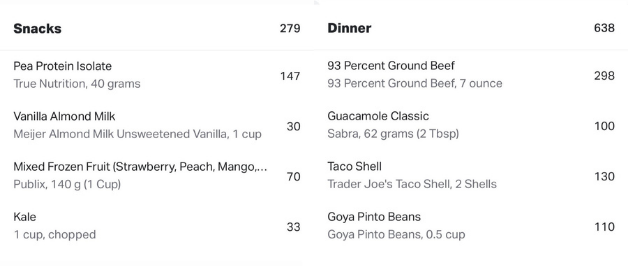
It's worth pointing out that I recommend weighing your portions if you're serious about fat loss. Which is why I always look for "grams" and "ounces" (in MyFitnessPal) whenever possible, and look for the weights on food labels [ex. "1 cup (240 mL)"] if MyFitnessPal doesn't give it to me.
Here’s where these meals place me:
- 2,134 calories
- 194 grams of protein
- 31 grams of fiber
I wrote about 40+ other meal ideas here:
40+ High Protein Meals & Snacks For People Who Hate Cooking
Step #4: Avoid being restrictive
You’re never going to stick to your budget if it eliminates 100% of the things you love spending on. The same applies to your nutrition.
There’s absolutely no reason for you to avoid alcohol or sugar or carbs once your targets are met. I often encourage my clients to splurge more if I don’t see any of their favorite meals in MyFitnessPal.
"Spending" anywhere from 10-20% of your daily calories on fun foods and drinks generally doesn't hinder progress.
In this scenario, I still have ~250 calories to spare after planned these meals. This means I can include any of the following without hesitation:
- A single bag of chips
- Some tortilla chips (~1.5 servings)
- An ice cream bar (ex. Klondike bar)
- Two glasses of wine (10 ounces)
- A "skinny" margarita (or two)
- A candy bar (ex. Reese's Take 5)
I recommend going out of your way to do this on a daily basis. This will make splurges less of a big deal and make it easier to be moderate when you do splurge.
Now what?
Now we let the magic happen. If you set aside a few minutes per night to plan next-day nutrition… you WILL see more results. You won’t have to rely on willpower as often. You won’t have to make as many important decisions when you’re fried.
But I should warn you: it is likely you’ll fade at some point. Almost everybody takes their foot off the gas when they see a little success (it's human nature). You’ll have two options for overcoming this when you do:
- Option #1 is trying to push through on your own. This can work from time to time -- but often produces sporadic results
- Option #2 is investing in external accountability. I review my client’s food diaries on a regular basis to make sure they’re planning for success. This produces a MUCH higher level of consistency (and the results to match)
In either case, there are a few other things for us consider:
- Meal planning is NOT the same as meal prepping. Meal planning is simply deciding what you’re eating in advance. Meal prepping involves actually preparing those meals
- Meal prepping DOES makes meal planning a lot easier. I recommend scheduling two mini meal prep sessions per week to knock out your proteins (ex. grilled chicken or ground turkey) and whatever else you don’t want to prep on the fly (ex. diced vegetables)
- You will NOT need to plan your meals this "intensely" forever. This four-step system is nothing more than an educational tool that's meant to empower you to succeed
Lastly: MyFitnessPal should almost never be a forever thing. There’s simply no need to devote so much bandwidth to nutrition once you’ve put in some up-front effort.
But going cold turkey with it isn’t wise, either. Here’s how I recommend “breaking up with” MyFitnessPal and graduating to a more intuitive approach:
How to Wean Off MyFitnessPal (WITHOUT Blowing Your Progress)
Please don’t hesitate to let me know if you have any questions on this.

